-
Realistic data needed to develop the 21st century power grid
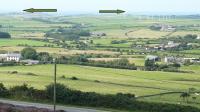
Say you have a great new theory or technology to improve the nation’s energy backbone — the electric grid. Would it not be great to test it against a model complete with details that would tell you how your ideas would work? But it is a challenge, because existing sets of data are too small or outdated; and you do not have access to real data from the grid because of security and privacy issues. To overcome this problem, is helping to create open-access power grid datasets for researchers and industry.
-
-
LA, Calif. file criminal charges against SoCalGas over massive methane leak
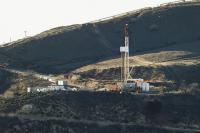
Criminal charges were filed on Tuesday against Southern California Gas, the utility company whose blown-out natural gas well forced thousands of people in the Los Angeles area to evacuate their homes. The charges claim that the company failed to report the massive leak to the authorities, as it operating license requires.Papers filed in court yesterday claim that the company allowed the release of 80,000 metric tons of methane into the atmosphere.
-
-
Making slums more resilient to climate change
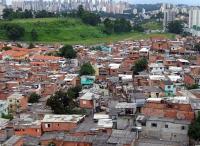
In our rapidly urbanizing world, access to sanitation, transportation, and other essential services remains a challenge for more than a billion people. In the world’s poorest and most vulnerable urban communities, finding new ways to meet these day-to-day human needs not only leads to sustainable development, it also fortifies them against the effects of climate-induced disasters.
-
-
Building cyber security testbed to help protect the power grid
It is easy to think of the electrical grid as the power plants, the high voltage lines, the transmission towers, the substations, and all the low-voltage distribution lines that bring power to our homes and businesses. An attack on that grid would involve getting out and cutting lines or dropping towers. But there is another, less visible piece to the grid — all the computers and communication networks that make it work. Attackers can go after the cyber grid, too. They can do it from a desktop. At no real cost. Potentially from anywhere in the world. With few if any clues left behind.
-
-
Flint Water Study research team to present findings on Thursday

Virginia Tech’s Marc Edwards and his team of research scientists and students will give a presentation on Thursday, 28 January, in Blacksburg to outline their work — done in collaboration with Flint, Michigan, residents — which exposed widespread lead-in-water contamination. The presentation will provide an overview of the Flint Water Study team’s efforts combining ethics engineering, citizen science, laboratory experiments, investigative science, and social media to confirm the high lead levels in Flint’s water.
-
-
Piping as poison: the Flint water crisis and America’s toxic infrastructure
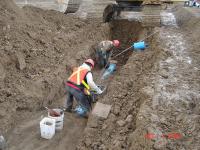
As the crisis over the water in Flint, Michigan, rolls on, we’re learning more and more about the irresponsibility and callousness of officials and politicians in charge. The mix of austerity politics, environmental racism, and sheer ineptitude makes for a shocking brew, yet the physical conditions that have made it literally toxic for Flint residents are neither as exceptional nor as recent as much of the media coverage suggests. An estimated three to six million miles of lead pipes across the United States still carry water, and most all of them are vulnerable to similar dangers, whether at the hands of short-sighted and prejudicial bureaucrats or politicians whose ideology or opportunism leads them to blithely dismiss well-established science. The best solution would be to replace our lead lines systematically and proactively, not just one crisis-beset city at a time. Until we do so, it’s a safe bet that more Flints lie on our horizon.
-
-
De-icing concrete to improve roadway safety
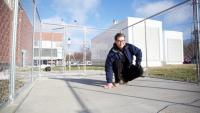
Researchers have developed a concrete which de-ices itself by adding a pinch of steel shavings and a dash of carbon particles to a traditional concrete recipe. Though the newest ingredients constitute just 20 percent of the otherwise standard concrete mixture, they conduct enough electricity to melt ice and snow in the worst winter storms while remaining safe to the touch.
-
-
Cyberattack on Ukraine grid: here’s how it worked and perhaps why it was done
On 23 December 2015, two days before Christmas, the power grid in the Ivano-Frankivsk region of Ukraine went down for a reported six hours, leaving about half the homes in the region with a population of 1.4 million without power. Because of its success, the incident has sent shock waves through cybersecurity circles. Could this happen in the West? In short, yes. This incident underscores the need for diligence and the increased effort in cybersecurity that we are seeing in the government and private sectors. The continuously increasing dependence on the power grid is driving the need for cybersecurity to be part of the design of all new systems.
-
-
Sandia Labs playing a leading role in grid modernization

Sandia National Laboratories is leading the Security and Resilience area of the Department of Energy’s (DOE) Grid Modernization Laboratory Consortium (GMLC), saying it is bringing its research capability in grid modernization to help the nation modernize its power grid. The consortium includes scientists and engineers from across fourteen DOE national labs and dozens of industry, academic, and state and local government partners, aligned into six technical areas.
-
-
U.S. assisting Ukraine investigate 23 December cyberattack on power grid
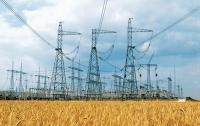
The United States is helping Ukraine investigate last month’s cyberattack last month which disrupted the country’s power grid and left some 80,000 customers without power. Experts say that the 23 December attack against western Ukraine’s Prykarpattyaoblenergo utility was the first known power outage caused by a cyberattack.
-
-
Nepal’s destructive post-earthquake landslides raise parallels for Pacific Northwest
Following the Nepal earthquake — even during the dry season when soils were the most stable — there were tens of thousands of landslides in the region. These landslides caused pervasive damage as they buried towns and people, blocked rivers, and closed roads. Expert estimate that the Nepal earthquake might have caused between 25,000 and 60,000 landslides. The subduction zone earthquake likely to occur in the future of the Pacific Northwest is expected to be larger than the event in Nepal.
-
-
The impact of rising sea levels on Rhode Island
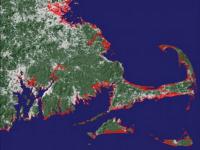
Climate change will bring profound changes to Rhode Island’s coastal communities in the coming decades. Scientists project sea levels to rise 3 to 5 feet in the state by 2100, and recent government projections are as high as 7 feet. Now, University of Rhode Island students are studying one community that could be hit especially hard: Matunuck. The year-long analysis by eight senior ocean engineering students is so thorough that flooding projections were made for specific structures —709 to be exact. Those home and business owners will be able to find out what could happen to their buildings during a powerful storm with rising sea levels up to five feet.
-
-
Redirected flood waters leading to unintended consequences

An intricate system of basins, channels, and levees called the Headwaters Diversion carries water from the eastern Missouri Ozark Plateau to the Mississippi River south of Cape Girardeau. The system protects 1.2 million acres of agricultural lands from both overflow from the Mississippi River during flooding events and from Ozark Plateau runoff. Climate scientists predict a continued pattern of extreme rainfall events in the upper Mississippi River region, suggesting that unexpected above average rainfall events in the Ohio and Mississippi River basins will continue to increase the frequency of extreme flooding events on these rivers.
-
-
Extreme weather increasingly threatening U.S. power grid
Power outages related to weather take out between $18 billion to $33 billion from the nation’s economy. Analysis of industry data found that these storms are a growing threat to, and the leading cause of outages in, the U.S. electric grid. The past decade saw power outages related to bad weather increase, which means that power companies must find a way address this problem.
-
-
As storms continue to batter U.K., estimates of cost rise
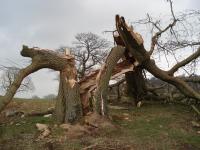
As Storm Frank – which is following on the heels of Storms Eva and Desmond — continues to batter England, Scotland, and Wales, estimates of the cost of the damage wrought continue to rise. The total economic loss caused by the three Storms may well breach £3 billion – and these projections do not include any government spending on flood defenses, estimated to be between £2.3 billion and £2.8 billion.
-
- All
- Regional
- Water
- Biometrics
- Borders/Immig
- Business
- Cybersecurity
- Detection
- Disasters
- Government
- Infrastructure
- International
- Public health
- Public Safety
- Communication interoperabillity
- Emergency services
- Emergency medical services
- Fire
- First response
- IEDs
- Law Enforcement
- Law Enforcement Technology
- Military technology
- Nonlethal weapons
- Nuclear weapons
- Personal protection equipment
- Police
- Notification /alert systems
- Situational awareness
- Weapons systems
- Sci-Tech
- Sector Reports
- Surveillance
- Transportation
Advertising & Marketing: advertise@newswirepubs.com
Editorial: editor@newswirepubs.com
General: info@newswirepubs.com
2010-2011 © News Wire Publications, LLC News Wire Publications, LLC
220 Old Country Road | Suite 200 | Mineola | New York | 11501
Permissions and Policies
Editorial: editor@newswirepubs.com
General: info@newswirepubs.com
2010-2011 © News Wire Publications, LLC News Wire Publications, LLC
220 Old Country Road | Suite 200 | Mineola | New York | 11501
Permissions and Policies
